Description
Ludlow’s castle was founded in 1086. There was no settlement of any consequence on the present site of Ludlow before the Norman Conquest, although it is possible that there was a small Saxon agricultural hamlet at Dinham.
In ancient British times Ludlow was known as Dinan and Llystwysoc, whose derivation implies it was the Palace of a Prince. The Saxon name Leodlowe implies an administration centre.
Broad Street
Ludlow’s first road was probably High Street, which formed the wide market place to the east of the castle gates. The town continued to grow, joining an old north-south road, now called Corve Street to the north and Old Street to the south. Mill Street and the wide Broad Street were added later. In 1233 the town was licenced to build its defensive wall by then all the main streets of Ludlow are founded.
Broad Street is the finest of all streets. A wonderful mixture of styles. Nikolaus Pevsner in his 1958 book ‘The Buildings of England: Shropshire,’ described the street as “one of the most memorable in England.”
The Valentines Ghost
Valentines Walk, was once a shut to a street of medieval cottages. It’s between the health food shop and De Greys .The two protruding bay windows was once a long established grocers called Valentines.
A grey lady, but ghosts are always grey to look at with just your eyes. She replays the scene like a tape recorder, just before the time when she was stabbed, when she made the wrong decision to hurry down the too quiet Valentines shut. She should have carried on. Past the murderer, he wouldn’t have done what he did on Broad Street, too public. If only she had carried on at this moment she sees him coming out of Bodenham’s shut, when it was a shut.
Early in 1836 a lady, a little worse for wear was heading up from the den of iniquity that was the Wheatsheaf Inn, Lower Broad Street, just under the arch. Much earlier, a tall stranger had tried to hit on her and she gave him a mouthful.
She was stabbed not 20 yards up Valentines shut, her face pushed into the wall, her dress lifted up.
Bodenhams 2 & 2a Broad Street
Bodenhams has been trading from a 600 year old timbered building since 1860 and is one of the oldest stores in Britain. Built in 1404 it combined ground floor shops with two storeys of high quality chambers above/ The upper two floors are strongly jettied, and the walls are given eye-catching diagonal struts, the precursors of 16th Century lozenge-in-lozenge decoration.
Bodenhams is a grade II listed building
19 & 20 King Street
Shop and dwelling. Probably 1462. Timber-frame and plaster; plain tile roof; 2-bays. 3-storeys and cellar; 2-window range:
C20 casements with leaded lights; box framing with moulded sill band; curved chamfered brackets to soffit; mutilated post
to dragon beam; jetty; similar casements over; moulded verge to eaves. Ground floor: early C20 shopfront with entrance to
right; splayed return to King Street; jetty.
King Street front: restored C20. Two-window range: similar casements in
box framing with moulded sill band and arched upper braces. Jettied 2nd floor with similar fenestration; 2 gables over.
Early C20 shopfront: doors with round-headed glazing to left and centre right: moulded window surrounds and glazing bars; jetty over.
INTERIOR: winder stair with C19 flight to attic; reset C17 panelling; stop chamfered ceiling beams; exposed
framing with curved arch-braces; crown-post derived roof. (Lloyd D: The Corner Shop – the history of Bodenham’s from the Middle Ages: 1970-; Ludlow Research Paper No.3: Lloyd D: BroadStreet – its houses and residents through eight centuries:
1979-: P.43-5).
2 & 2a Broad Street
Shops and dwellings. Early C17, restored late C19 and late C20. Timber-frame; plaster and render; plain tile roof with twin gables to front. 3-storeys; 2-window range: 6-light oriels on enriched consoles and moulded underhangs, with enriched mullions and cornices, set in post-and-pan framing; carved bressummer on figurehead consoles; enriched 3-light mullions with weather-hoods; enriched plate; ornate pierced barge-boards with pendants and finials.
C20 shopfront with central entrance, to left; recessed plank door and continuing shopfront to No.5, to right; all under ornate bressummer boards with enriched consoles. Decoration restored in pine.
Health Shop 3 & 4 Broad Street
The building now shared with the clothiers and by a health food shop with a now doored shut or passageway. It looks fancy and Tudor. It’s actually a Victorian sham, built in 1871 around the medieval shut’s walls.
Health Shop is a grade II listed building
Shop and dwellings. Early C17. Timber-frame and render; shallow pitched plain tile roof. 3-storeys; 2-window range:
C20 mullion and transom oriels with leaded lights, on bracketed soffits, set in close studding; jetty; 2-light
mullions with moulded sills and lintels, set in box-framing; moulded plate; vertical studding over. Early C20 double
shopfront with central paired entrance, recessed under boarded bressummer, on cast-iron pillars. Wing to right rear.
Thoroughly restored, 1990.
De Grey’s 5 & 6 Broad Street
This is one of the genuine old houses of Ludlow, having been built about the 14th Century (probably A.D 1379). The charming old world atmosphere is still retained and although much of its early history is unknown there is probably no doubt that it played its part in the plots and intrigues of the Dark Ages. It has been a popular eating and rendezvous since the 1920s.
De Grey’s black and white façade is one of Ludlow’s most photographed features, on a street famously described as “one of the most memorable in England”. Since it was built some 450 years ago, in the reign of Elizabeth I, number 5 Broad Street has had numerous uses: A young Princess – later Queen Victoria is reputed to have bought a pair of shoes in its shop.
The ghost of the Old House now known as De Grey’s
Lovers of the gruesome will be interested in the fact that a murder was undoubtedly committed in the cellar, and the spot was marked with a red cross. Though the ages have discoloured the cross and it assumed a blackish blue it was nevertheless clearly visible until recently when it was obliterated by the necessity of concreting the cellar floor.
De Greys is a grade II listed building
Shops and dwellings, now cafe. Early C17. Timber-frame and plaster; slate roof with steeper pitch to right; rendered ridge stack to left. 3-bay plan. 3-storeys; 3-window range: toleft, early C19, 8/8 sash; 2 early C19, 2/2: 8/8: 2/2 canted bays. Two 6/6 sashes and one 3/6 sash. C19 shopfronts; 6-panel door with plain overlight to far right; all under deep overhang, on cast-iron columns, one carrying chamfered carved head of probable arcade post. C18 and C19, 2- and 3-storey ranges to rear have massive ceiling beams; 3-storey range and cross-wing, of rubble and brick (some C17). Rear: 2-window range with C20 fenestration, including leaded lights to groundnfloor, double doors and windows; gable shows C17 timber-framing; various fenestration with leaded lights and some old glass, under brick segmental arches.
Poyner’s Drapers 8 Broad Street
This clothes shop has changed little in living memory.
It’s a grade II listed building
Shop and dwelling. C18 front to earlier core. Roughcast to timber-frame; C20 plain tile roof; C19 brick stack to right rear. 2-storeys and attic; 2-window range: C18 6/6 sashes in broad cases with moulded architraves; 3 isolated enriched consoles, each having fire mark. Wood modillion eaves; two C20 restored gable dormers with early C19 6/6 sashes.
Ground floor has early C20 shopfront; central 2-leaf, 2-panelled door with shutters to upper section, and overlight, between canted plate glass windows flanked by pilasters, and under enriched cornice. Recessed under deep overhang with plastered ceiling, supported on cast-iron columns. Enriched base of corner frame post, and mutilated plate to right. C19 plank door to right in beaded case, under painted weather boarding.
Draper’s shop, in the Poyner family, since C19, retaining range of fixtures and fittings.
The Angel Hotel 8 Broad Street
The town also contained several coaching inns such as the Old Angel on Broad Street, public houses and ale houses, leading to court records of some alcohol-induced violence and a certain reputation for excess. Several coaching inns were constructed to accommodate travellers by stagecoach and mail coach. The oldest surviving inn today is the 15th century Bull Hotel on the Bull Ring.
Just at the far right edge of this picture, three shops past De Greys, is The Angel which was founded as a hotel in 1555, some 60 years before The Feathers. Fine bay windows protrude from the timber facade. One of its most famous visitors was Admiral Nelson. It was a terminus for passenger and mail coaches in the 18th & 19th Centuries.
The Angel is a grade II listed building
Shop and dwelling, now hotel. Early C17. Timber-frame and plaster; slate roof; brick end stacks.
3-storeys; 2-window range: two C18 bowed oriels with lead roofs and plastered coved underhangs, and three C20 leaded light sashes; in chevron braced box framing, under enriched bressummer. 2 moulded wood mullion and transom casements with leaded lights, on enriched consoles, set between chevron braced panels. Upper studs suggest change in roof pitch; wood modillion eaves.
Ground floor has three late C19 plain sashes in moulded cases, and to right, 8-panelled double doors between moulded posts with chamfered lintel, all recessed under deep jetty with chamfered ceiling beams, supported on cast-iron brackets. Passage to rear has exposed ceiling beams and joists; C18, 6/6 sash over.
Wing to rear has jettied 2nd floor with enriched consoles, and early C19 round-headed 3/3 sashes with central casements.
Further wing (2-storeys and attic) has C20 metal casements, with wood casements to gables.
INTERIOR: ground floor front contains some C17 timber-framing; C19 fireplace with moulded 4-centred arch; some exposed timbers to 1st floor.
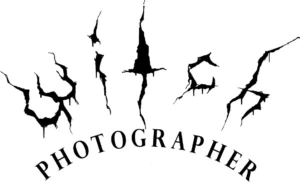
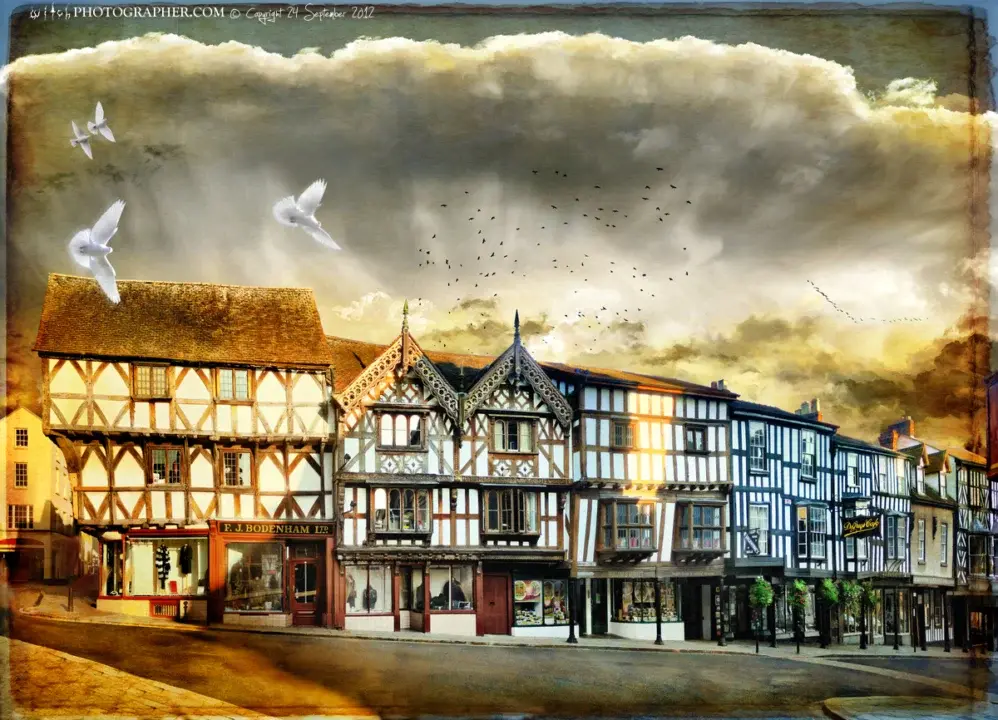
 Click a section to zoom in. These are
Click a section to zoom in. These are 























































































































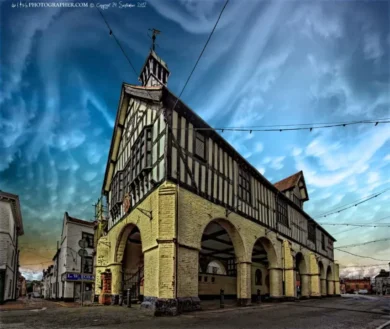
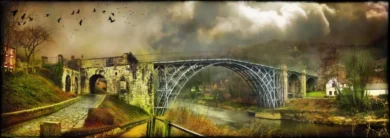
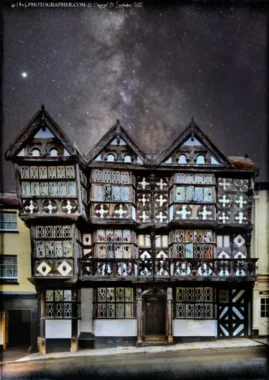
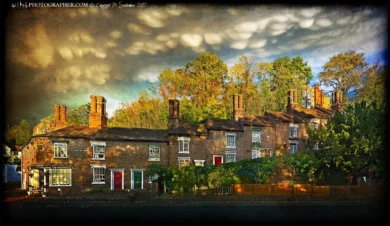


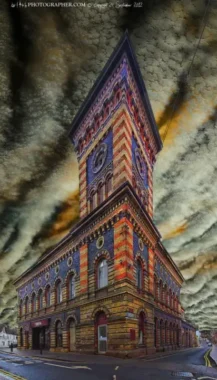
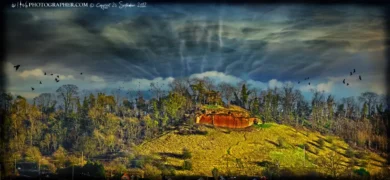
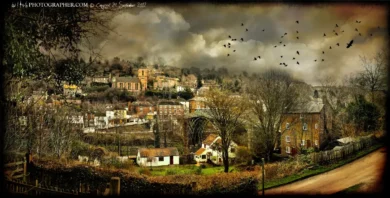
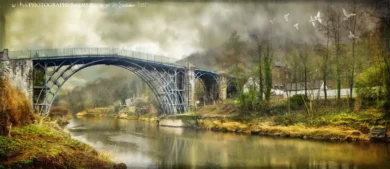
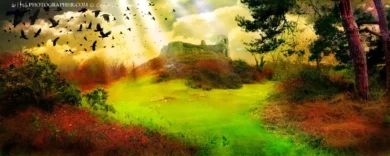

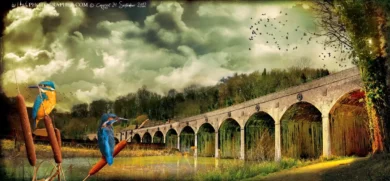
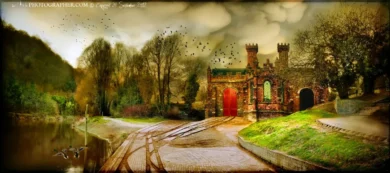
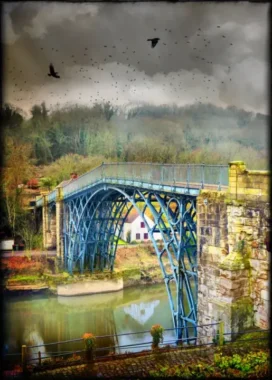

Reviews
There are no reviews yet.